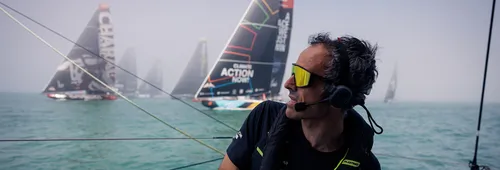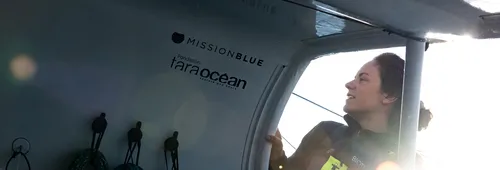Latest news and media
Benjamin Dutreux announces the construction of a new IMOCA for the 2028 Vendée Globe
MACIF announces the construction of a new IMOCA for the 2028 Vendée Globe, with British sailor Sam Goodchild at the helm

Charlie Dalin: The Hidden Battle Behind Victory
Some victories transcend the world of sport. Charlie Dalin's victory is one such example. Yesterday, the skipper revealed that he had won the latest Vendée Globe while fighting an invisible battle against cancer. It was a deeply moving announcement, reflecting a man whose inner strength and…
discover the upcycled luggage collection
Sam Goodchild wins the Azimut Challenge with Macif Santé Prévoyance

Franck Cammas: "The Vendée Globe is now like a Solitaire du Figaro around the world"
THEY ARE DREAMING OF THE 2028 VG. Franck Cammas 4/4. Like Amélie Grassi, Alan Roberts and Gaston Morvan, Franck Cammas completed The Ocean Race Europe on Sunday. This brings to a close our series of profiles dedicated to the sailors competing in the race who have the ambition to take part in the…
Nico d'Estais and Café Joyeux, a new project for the 2028 Vendée Globe!
Paul Meilhat and his crew win TORE aboard Biotherm

Gaston Morvan : "the combination of competition and exploration makes this race unique"
THEY ARE DREAMING OF THE 2028 VG. Gaston Morvan 3/4. They are currently sailing in The Ocean Race, as part of a crew, as another step in their learning process of offshore sailing. But their real goal is the Vendée Globe: a solo, non-stop, unassisted race around the world. It is a unique,…

Alan Roberts: "The harder the challenge the more you take away from it"
THEY ARE DREAMING OF THE 2028 VG. Alan Roberts 2/4. They are currently competing in The Ocean Race as part of a crew, with experienced skippers, but dream of being at the start of the next solo, non-stop, unassisted round-the-world race on their own boat. Here is a series of portraits of…
Maxime Sorel, UTMB finisher!

Amélie Grassi: “The Vendée Globe is my major driver”
THEY ARE DREAMING OF THE 2028 VG. Amelie Grassi 1/4. They are currently competing in The Ocean Race as part of a crew, with experienced skippers, but dream of being at the start of the next solo, non-stop, unassisted round-the-world race on their own boat. Here is a series of portraits of…

Is the human factor the key to performance?
Pushing back the limits of body and mind: that's what the Vendée Globe is all about. But until recently, the physiological and mental effects of a single-handed round the world race on a 60-foot monohull remained surprisingly poorly understood. This gap has now been filled by an ambitious…
Before the Big South in 2028, the Far North in 2026! The Vendée Arctique unveils its new route
Sam Goodchild won the first edition of the Course des Caps
Élodie Bonafous' IMOCA named "Association Petits Princes - Quéguiner"

In the Vendée Globe, there's a hero or heroine for everyone
They live in Brest, Brussels, Lyon, or Cambridge. They are 16, 43, 54, or 62 years old. They work in public education, cybersecurity, run a food truck, or are joyfully enjoying retirement or their high school years. At first glance, nothing — or very little — connects their daily lives with those…


